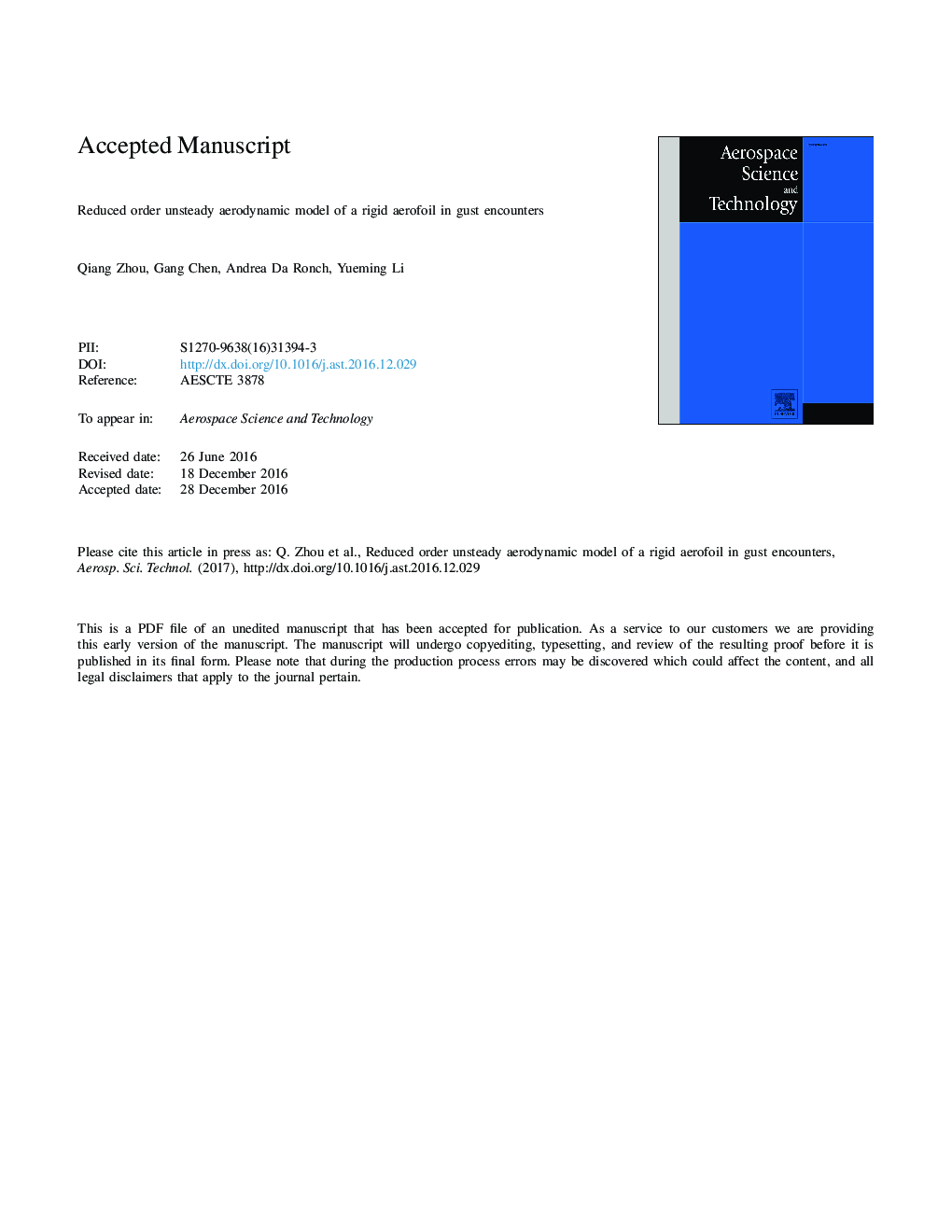| Article ID | Journal | Published Year | Pages | File Type |
|---|---|---|---|---|
| 5473044 | Aerospace Science and Technology | 2017 | 42 Pages |
Abstract
Predicting gust loads using computational fluid dynamics is prohibitively expensive and unrealistic for parametric searches. This work presents the development, implementation, and demonstration of a reduced order model which balances accuracy and speed. The model builds on a proper orthogonal decomposition representation of the linearised time-domain equations and achieves a further reduction in size through a balanced truncation. The novelty of the work lies in the mechanism to introduce any arbitrary gust shape within the reduced order model framework. The methodology combines an analytical formulation, loosely based on the Küssner function, and a numerical approach to identify, or optimise, the unknown parameters of the analytical ansatz. A model problem is investigated for various gust shapes for incompressible and transonic flows. It is found that: (i) the generation of the reduced order model is equivalent to about two steady-state analyses; (ii) the predictions of the reduced order model are in good to excellent agreement with the reference solution; and (iii) the reduced order model achieves a consistent speed-up of about 300 times compared to time integrating the original equations. The reduced order model is parametric with respect to the gust disturbance, and may be employed for the worst-case-gust search without extra costs.
Related Topics
Physical Sciences and Engineering
Engineering
Aerospace Engineering
Authors
Qiang Zhou, Gang Chen, Andrea Da Ronch, Yueming Li,
